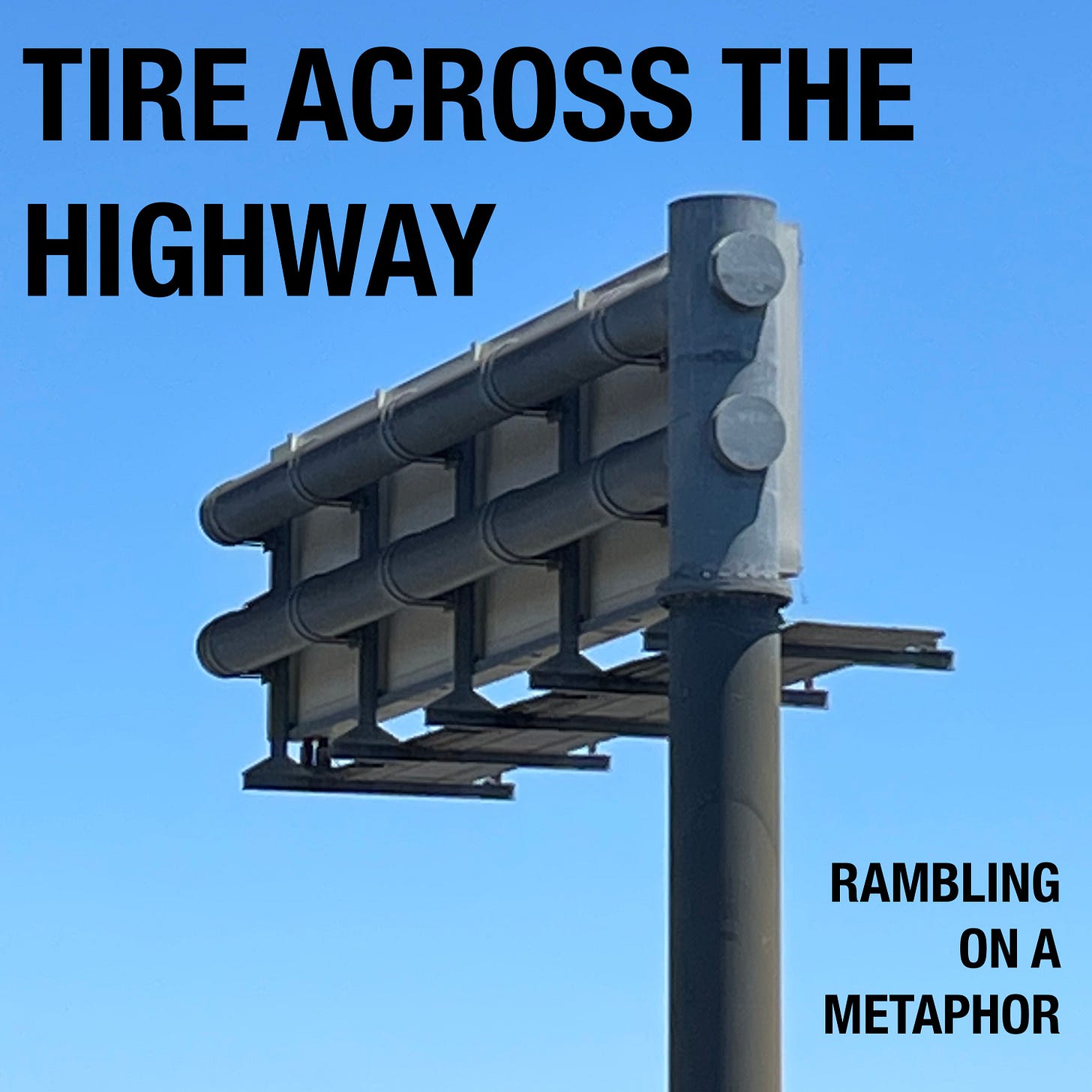The other day as I drove to have coffee with a friend, I watched a car wheel, hubcap and all, come barreling off the edge of an on ramp to 580. Watching it in bright morning light it looked as though it chose to fly down that part of the green hill, crazed as it bounced its way through every lane, nearly hitting an SUV along with everyone else, only to bounce off the meridian, falling in the middle fo traffic, like some tired cat. Telling my friend about it, they said it sounded as though it was out of a dream. I honestly thought it reminded me of the crisp beginning of JG Ballard’s Concrete Island where a rich architect falls off the highway, speeding in his new sportswear. And it sort of was that dream, was that opening to a novella—a thing passing before me like a chaotic nightmare, full of fear yet ready for something terrible to happen, only to pass from sight, and laugh at the luck.
This wasn’t a dream, no matter how surreal it felt to witness. The tire had no character. It was just a tire, and chaos brought it into the road. And this is driving in the east bay. I can’t remember when it wasn’t absolutely batshit. It’s full of danger, like many roads, so many close calls and road rage we have to go through just to go about our days, do our errands, make the money we need to keep ourselves fed.
I read today that some think tanks believe we may be entering a doom loop when it comes to trying to stop the climate crisis. We are having to deal with the impact of the affects of the climate crisis already, while at the same time needing to reduce our use of fossil fuels and change our lives. Why is this a doom loop, as they call it? Because as the climate crisis increases, so do the costs of fixing those damages, putting aside money for repairs rather than funding fuel reduction that might create a more livable system without fossil fuels in the future. At least, that is the dream with business as usual still in tact. As The Guardian wrote:
The thing I’m most concerned about is that we’re not factoring in the cascading risks to societies,” said [Laurie] Laybourn [an associate fellow at the Institute for Public Policy Research]. “It’s not just the big city-smashing storms we should be concerned about, it’s the consequences that ripple through our globalised systems.”
“For the UK, it may not necessarily be the sheer cost of responding to disasters that’s the biggest distraction. It could be that it has to deal at the same time with a food price shock and resurgent nativism, playing off fears about so-called climate refugees,” he added.
I think of roads much the same—repairing costs could be seen to reduce funds for creating a more efficient public transit system, one that could help reduce the number of deaths and accidents relating to rush hour traffic and literally just trying to get to your job. And here, in the theoretically liberal and climate conscious Bay Area we drive everywhere, our public transit only functional for those with enough wealth to live in neighborhoods with BART lines or consistently running buses, creating a greater need for cars, placing more impact and damage on our environment, seeing as transportation causes just over a quarter of all emissions in the United States.
Perhaps these are merely political arguments functional only in narrative. Yet narrative is how we learn as humans and are the precursor to true changes. It is often easy with these stories to blame the systems that created us, created this world that today we all occupy. But there are some solutions that we could take as individuals that I think we’re all fairly aware of at this point. So what is stopping us, stopping me? What is halting this change? Is it simply how we talk about the climate crisis? Or maybe it’s that we don’t know which story to accept as the truer story—the fault of ourselves or the systems that we create together? Or is it the way we react to the stories? Do we opt for optimism, which could neglect reality, or shoot for fear mongering fatalism, which could lead to a negligent end of our world? How do we change our lives?
In writing some stories for this newsletter, I am trying to attempt a balance, a recognition that we are at once victims and purveyors of the climatic crisis, that we cannot just blame systems or ourselves as individuals. Truth lies somewhere between every bias. And I’m not sure which kind of story is best. Do I show you how I believe things could be? Or do I show you to the best of my ability what it is to live today in this world, attempting to enjoy moments of clarity as we try and dodge rogue tires and chaos, then adjust and move on, preparing for the next tragedy?






